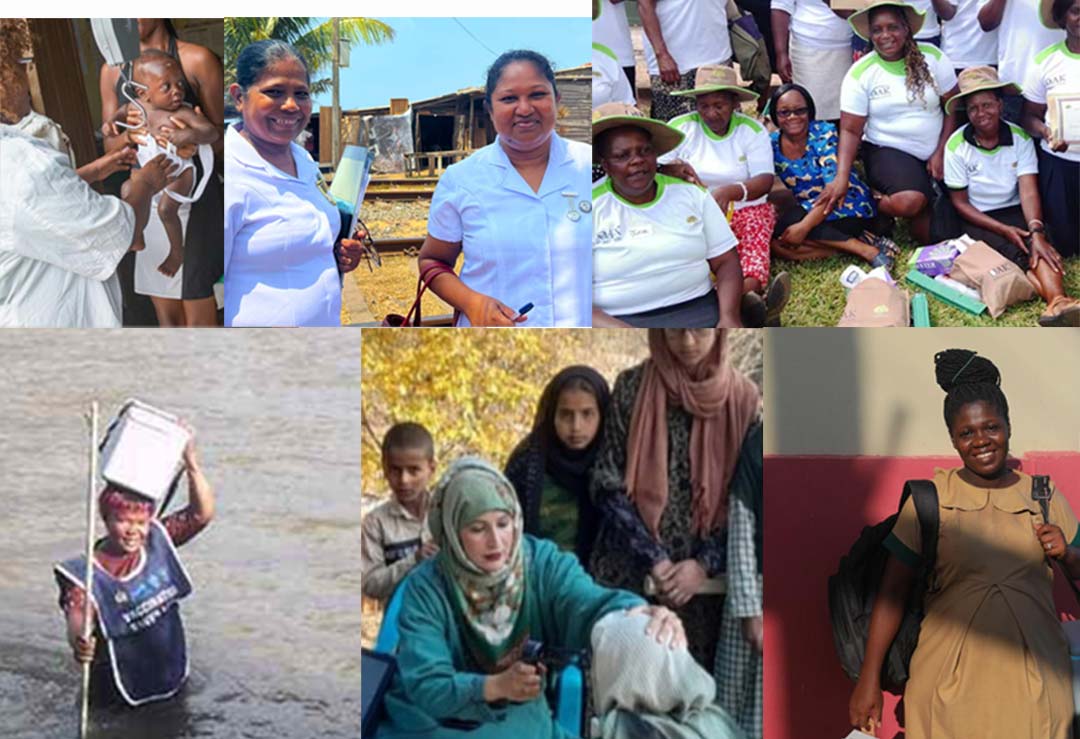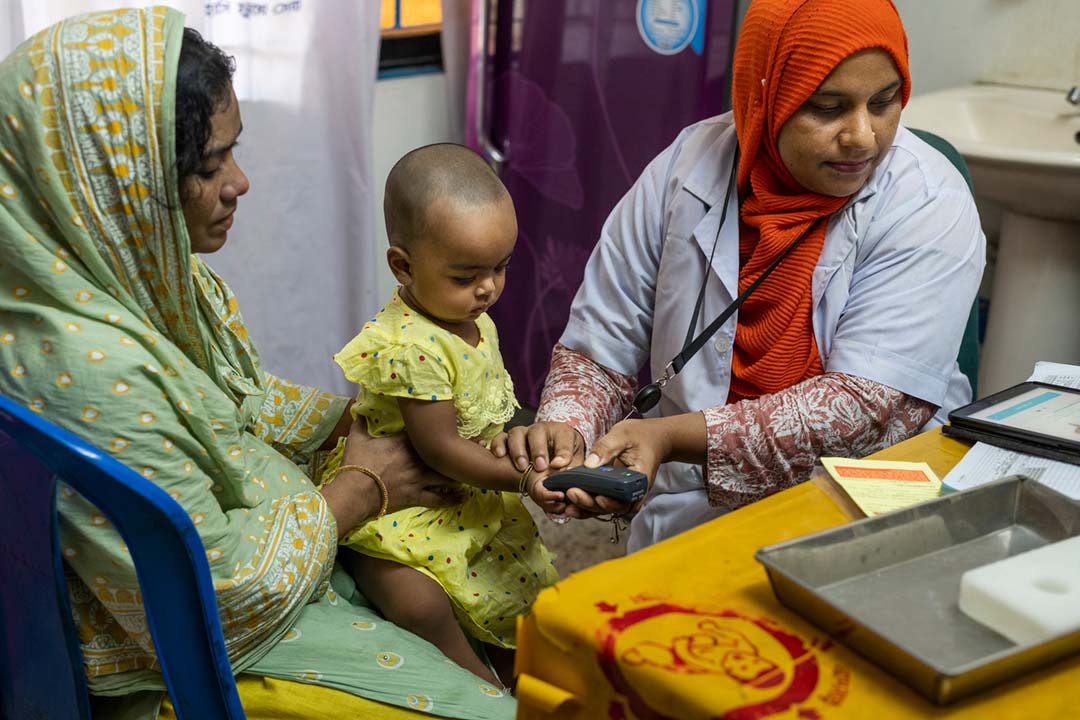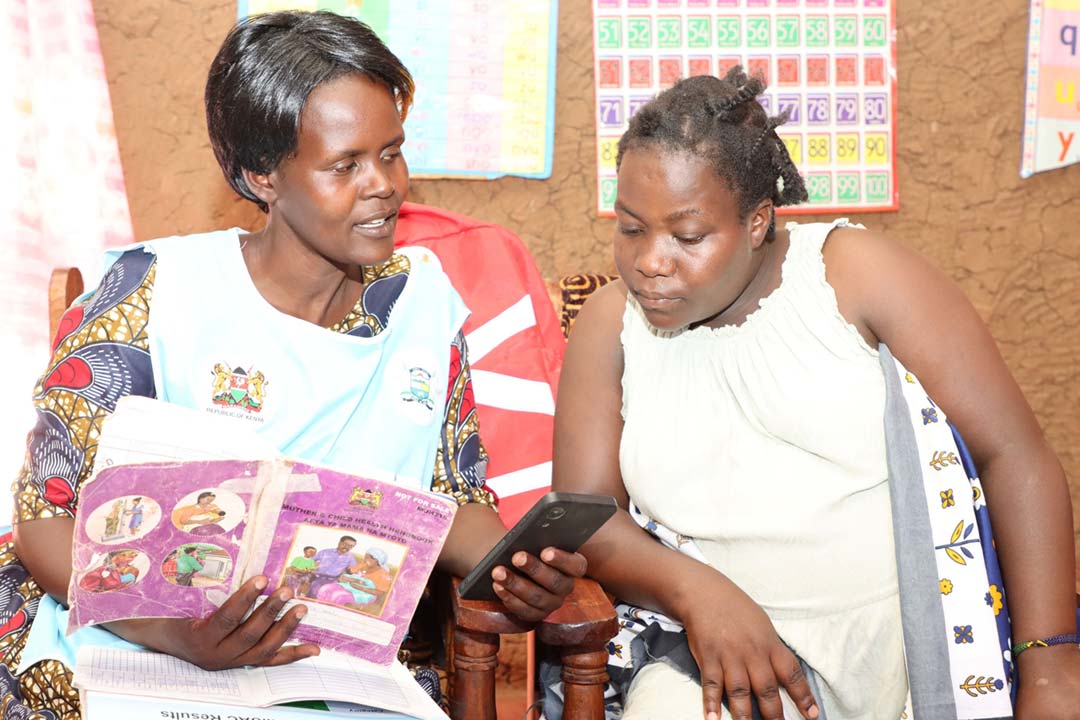Protecting health on both sides of the zoonotic frontier: Dr Gladys Kalema-Zikusoka
Ugandan wildlife vet Gladys Kalema-Zikusoka knows that pathogenic threats move both ways across the human-animal boundary – and that the best way to protect both animals and people is to bring public health and conservation together.
- 25 March 2022
- 9 min read
- by Maya Prabhu

Darting mountain gorillas is “a humbling skill” to learn, says Dr Gladys Kalema-Zikusoka, a wildlife veterinarian and conservationist who has been keeping a watchful eye on the endangered great apes of Uganda’s Bwindi Impenetrable Forest National Park since the mid-1990s.

Photo by Jo Anne McArthur
“At the beginning I wasn’t very good – I’ve got better at it over the years,” she laughs. Gorillas are smart, which means you get just one shot. “There’ve been times when you’ve darted a gorilla and the silverback looks at the dart, sniffs it and says: ‘Uh-oh, there’s some funny business going on here,’ and they start charging.”
As far as the apes go, it’s so far, so good. As of March 2022, there have been no COVID scares among the Bwindi gorillas – though Dr Gladys naturally holds her breath for them as each highly contagious new variant ripples across the globe.
The tiny projectiles are an invaluable tool, capable of delivering life-saving medicine or injecting a tranquiliser to facilitate an otherwise impossible hands-on clinical exam. But, Dr Gladys (as she’s known to friends and colleagues) explains, interventions like these are always matter of last resort in the wild.
That’s not only because such encounters are risky for the people involved, or disruptive to the animals’ natural behaviour, but crucially, because any close-up human-gorilla contact carries the danger of potentially disastrous cross-species disease transmission.
The threat of pathogens slipping in either direction across the zoonotic frontier is the central concern of Dr Gladys’s career. The porousness of the boundary between human and animal health is the reason that she and her dart gun are so badly needed in Bwindi to begin with – a fact that was first driven home to her in the rainy season of 1996.
Dr Gladys, then a recent graduate of the Royal Veterinary College in London, was working as the Uganda Wildlife Authority’s first-ever staff wildlife vet, when a four-member family of Bwindi gorillas was spotted displaying unusual signs of disease. She led a team to investigate the outbreak.
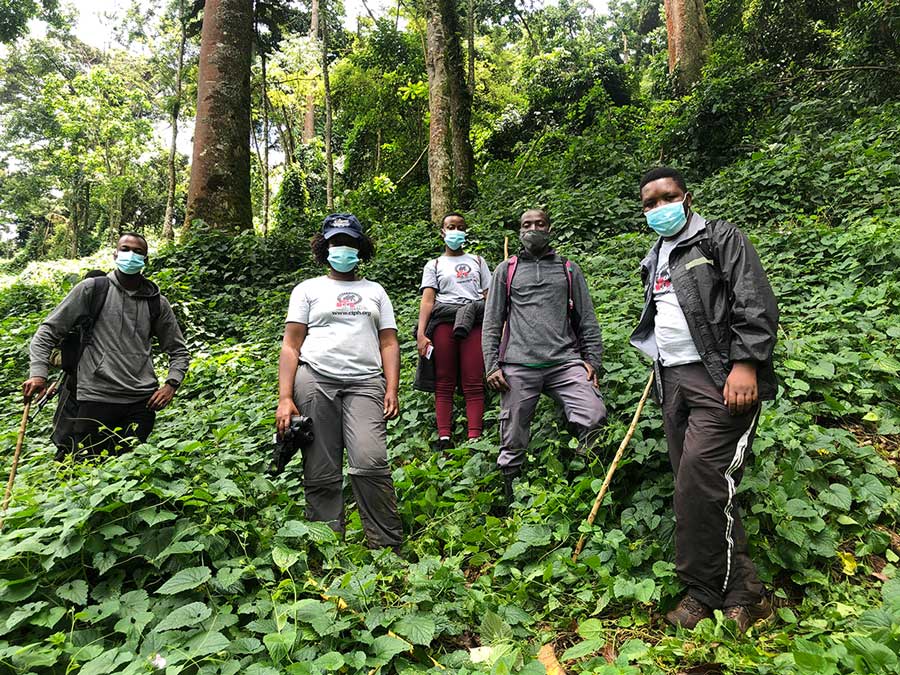
Photo by CTPH
A seven-month-old infant male known as Ruhara was the worst-affected. Skinny, pale, and missing most of his body hair, he was clearly in frail health. The team decided to tranquilise a different juvenile male who showed similar, but less severe, symptoms in order to perform an epidermal biopsy. The biopsy turned up an incontrovertible diagnosis – the apes had scabies, a mite-borne skin disease that was tellingly common in the human communities on the national park boundary, but which had never been reported in free-ranging gorillas before.
A week later, Dr Gladys and her team tracked down the affected family and darted them with doses of the anti-parasitic, Ivermectin, but it was already too late for baby Ruhara. The following day, his emaciated little body was found on the trail. “It was clear that in these fragile areas where wildlife, people and livestock intersect, a decline in any of them affects the survival of others,” Dr Gladys would later write.
That pathogen spill-over from other primates to humans could represent an existential threat to us was clear: in HIV and Ebola, humankind had two terrifying, headline-making examples. But for mountain gorillas, whose total population numbered just 600 at the time of the Bwindi scabies outbreak, and had bounced back to a much improved but still-delicate 1,063 by 2019, a new human-origin epidemic could easily spell extinction.
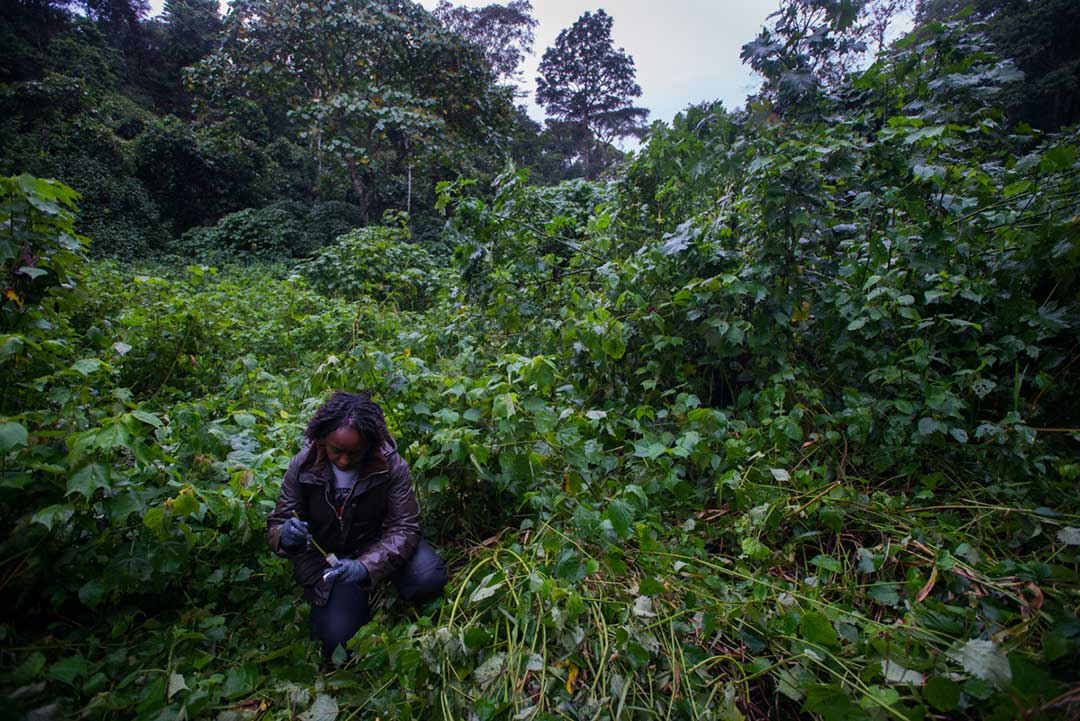
Photo by Jo Anne McArthur
The awareness that even a relatively mild, common human bug could have deadly consequences among the apes led Ugandan authorities to impose strict restrictions on the tourists who flocked to see the gorillas. Even in the ’90s, visitors were required to keep several metres’ distance from the apes, and instructed to stay home if they were experiencing any symptoms of infection.
But even as the restrictions grew more cautious with time, data Dr Gladys and her collaborator researchers gathered suggested that both tourists and gorillas frequently violated the distancing rules, edging nearer to get a better look. And further, as the scabies outbreak had highlighted, gorillas were encountering people in the less controlled zones just outside the park.
Maybe the crop-land had been part of the gorillas’ range in the old days, when the forest was bigger, or maybe it was just the lure of the farmed banana trees, but gorillas often strayed right into their human neighbours’ backyards. With that kind of spatial overlap, shared water sources, open defaecation, and even scarecrows dressed in old clothes can become disease transmission risks. “Gorillas are very curious,” says Dr Gladys. “Touching a piece of clothing – that’s how we think they got scabies.
“We realised that disease going in both directions was a big issue,” she recalls. “But particularly with great apes, disease going from people to wildlife was more of an issue, actually, than disease passing from wildlife to people. There are so very few great apes – very few gorillas, very few chimps. It’s much easier for us to go to the doctor than for them to go to the doctor.”
It was that understanding that led Dr Gladys to co-found, in 2003, a path-breaking NGO called Conservation Through Public Health (CTPH). The guiding idea was straightforward: if you could improve human health, improving community attitudes to conservation along the way, you’d be helping people and protecting wildlife at the same time. It was an example of the kind of global, interdisciplinary thinking that has more recently gained traction under the banner heading of ‘One Health’. As Dr Gladys says. “I think we were developing that One Health approach before people really understood what One Health was about.”
Have you read?
If CTPH’s vision was new and compelling, so was its founder. “She was young and energetic and – you know – she has an aura. She just exudes a certain sense of optimism and confidence,” remembers Dr Tony Goldberg, a disease ecologist at the University of Wisconsin-Madison, whose long-term research project, the Kibale EcoHealth Project, frequently brings him to Uganda. He and Dr Gladys first met in the early 2000s. “She was such a perfect symbol for conservation, health and Uganda’s progressive tendencies – she’s still that way.”
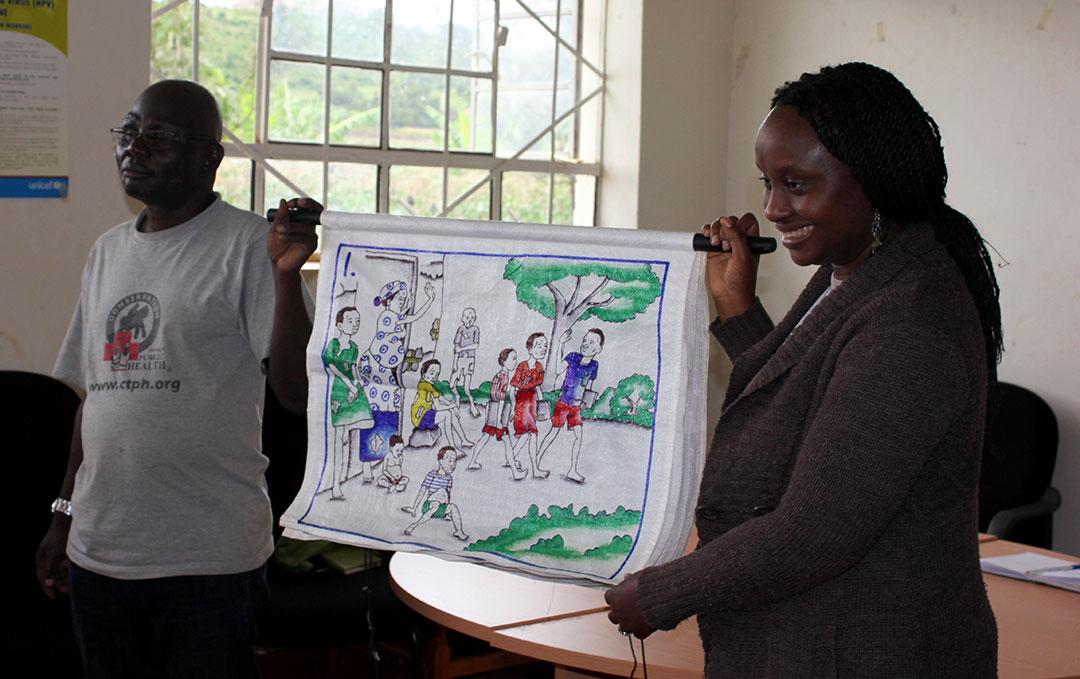
Photo by CTPH
In the years that followed, CTPH built momentum, instituting a range of initiatives in and around Bwindi – setting up field laboratories to regularly monitor abnormalities in gorilla faecal samples, a sort of watch-tower system for a potential zoonotic or reverse-zoonotic events, helping communities stage educational skits about better hygiene and conservation practices, and training community-based “gorilla guardians” to encourage curious visiting animals to return to the safety of the forest reserve.
Getting community buy-in hasn’t been difficult: “Gorillas are so important for the community,” Dr Gladys says. Tourism revenue, disproportionately attracted to Bwindi by the gorillas, is a vital source of income to the people whose homes neighbour the reserve.
On a given day, Dr Gladys herself could be found in the forest, observing familiar gorilla families from a cautious distance to confirm their wellbeing (still her “favourite thing”), examining an ailing cow or goat on the park’s periphery, or conducting a community workshop with one of CTPH’s volunteer Village Health and Conservation Teams (“seeing communities changing” is her second-favourite thing).
Health and conservation objectives became increasingly inseparable in Bwindi. With CTPH training, community health workers began to address the dangers of bushmeat consumption and deforestation in the same breath as crucial hygiene habits like hand-washing and water-boiling.

Photo by Kibuuka Mukisa
“Whenever we have meetings with the communities, we always invite the Wildlife Authority, the district health people, and the veterinary people so that everybody’s in one room – especially the health and conservation people, because they have a lot to talk about, and they never talk to each other,” Dr Gladys says. “Once you bring them into one room, everybody’s able to educate each other about the things you’d be looking out for.”
The results were exciting: scabies, for instance, hasn’t been seen in the gorilla population in years. Giardia, a diarrhoea-causing parasite that affects humans, livestock and wildlife, became significantly less prevalent among Bwindi’s gorillas, dipping slightly among people.
And then came COVID-19. On the one hand, a highly transmissible, deadly human respiratory virus is a gorilla conservationist’s nightmare. But on the other, the pandemic has acted as something of a vindication of the work CTPH had done so far.
Owing to her One Health experience, Dr Gladys was invited to sit on the Ministry of Health’s COVID taskforce, leaving her well-placed to advocate for the priority vaccination of park rangers, whose necessary proximity to the animals made them a risky link.
“When the pandemic came along, we already had all these structures we were working with,” Dr Gladys says. “We’d already started training the rangers on how to manage tourists during a visit.” Gorilla trekking shut down for a prolonged period beginning in 2020, opening up only with far more stringent regulations, including an extended distancing norm and mandatory mask-wearing. “We’d trained them in gorilla health monitoring, in One Health. We’d already trained gorilla guardians to monitor the health of gorillas outside the park, how to collect samples, and how to herd them at a safe distance.”
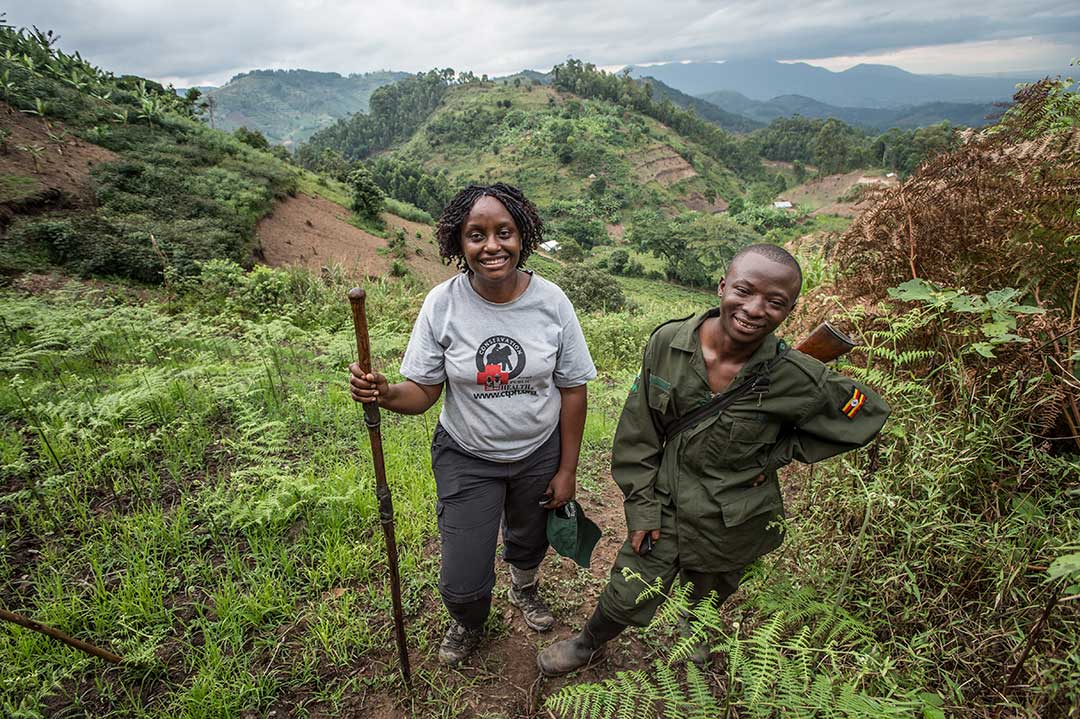
Photo by Jo-Anne McArthur
With community health workers already fluent in the language of public health and conservation, adding COVID-19 messaging that aimed to protect both people and gorillas from infection was a relatively light lift. In the Bwindi zone, which has few health professionals, Village Health and Conservation Teams helped triage human cases and coordinate home-based care for people with mild COVID-19, even as they made sure that those people whose homes were occasionally visited by wandering gorilla groups were especially COVID-safe. “They’ve been very helpful in convincing people to get vaccinated,” Dr Gladys adds – in biodiversity hotspots, she says, vaccination is vital.
As far as the apes go, it’s so far, so good. As of March 2022, there have been no COVID scares among the Bwindi gorillas – though Dr Gladys naturally holds her breath for them as each highly contagious new variant ripples across the globe.
Meantime, her particular perspective on the ‘One Health’ message seems to be finding a freshly receptive audience in this pandemic moment. In October 2021, Dr Gladys was named to the WHO’s new Scientific Advisory Group for the Origins of Novel Pathogens. In December, she was recognised as a UNEP Champion of the Earth.
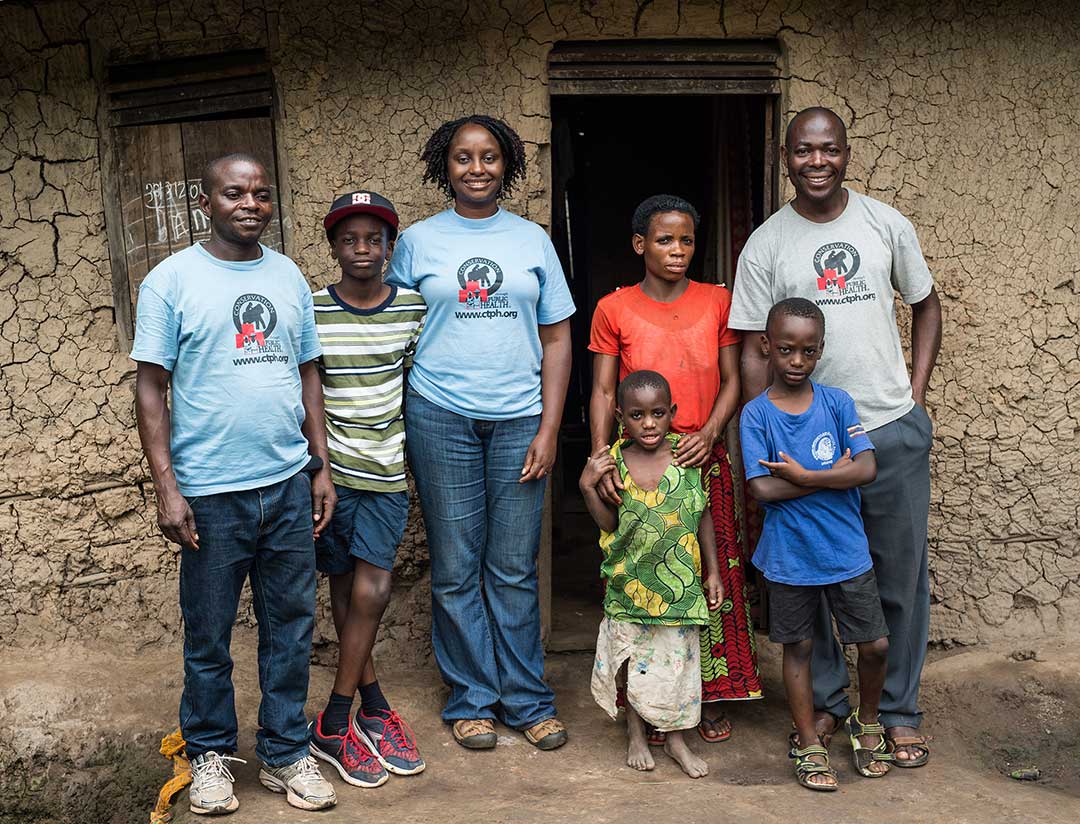
Photo by Jo Anne McArthur Unbound Project
The public, too, is listening: “Before, when you mentioned zoonosis, nobody really understood what you were talking about,” Dr Gladys says. “But with the COVID pandemic, everyone understands it.” Reckoning with the fact that disease is a province we share sounds like the beginning of an important new chapter.
60%* – source: https://www.frontiersin.org/articles/10.3389/fpubh.2020.596944/full
More from Maya Prabhu
Recommended for you





